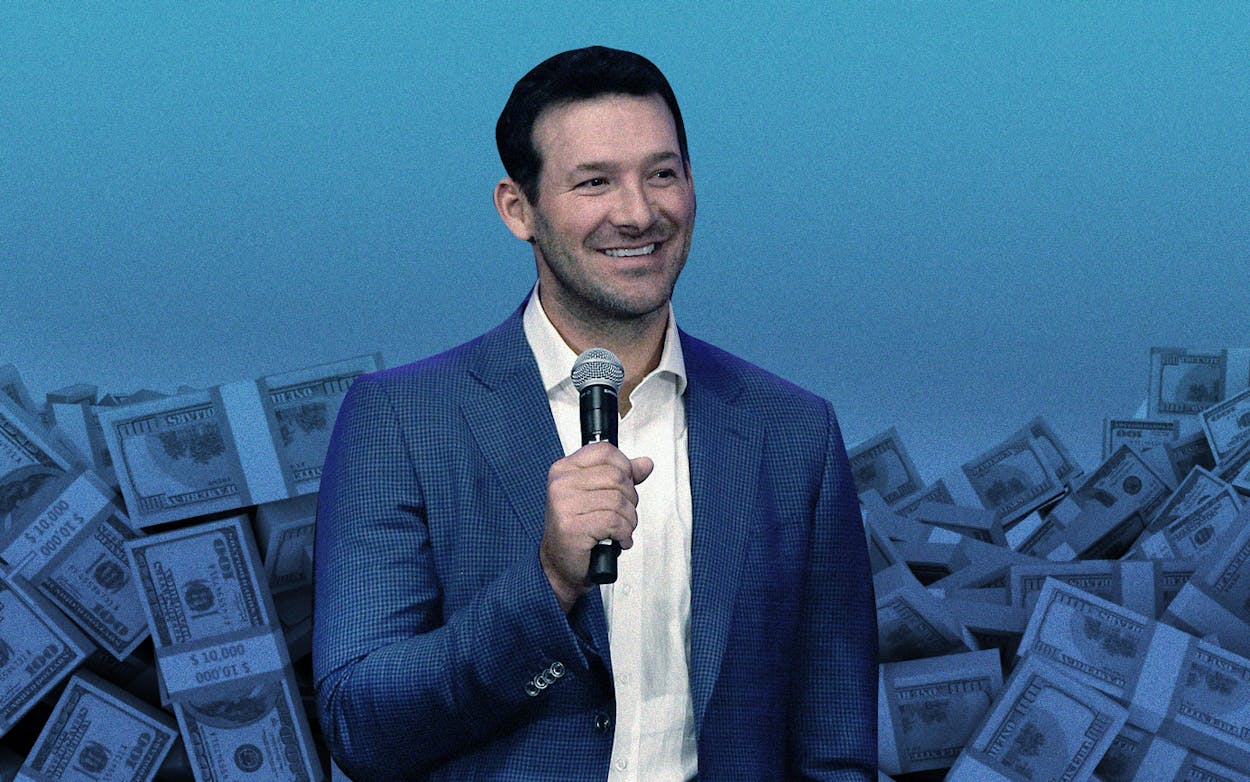No one could have guessed how good Tony Romo was going to be as a color commentator. He came out the gate as the best in the game—an enthusiastic, authentic voice who explained action on the field in a way that made listeners smarter about how football is played. And two years in, he’s still at it.
Only an NFL quarterback whose heart is still in the game could break down coverage the way Romo does—it’s not uncommon to hear him call exactly where the ball is going, and why the play is going to blow up when it gets there—and does it all with a nervy edge. He bleeds inside for every quarterback whose play is going sideways, and sweats the timeouts they haven’t called. Romo might have had another couple of years ahead of him on the field, if he’d decided to get back out there after the injury that ended his career with the Dallas Cowboys—but instead, he decided to go into the broadcast booth, be amazing at it, and end up on CBS’s lead announcing team in his rookie year as a color commentator.
Romo is so good, in fact, that ESPN is trying to poach him for the 2020 season, according to Front Office Sports. As the sports business outlet reported on Sunday night, ESPN has readied an offer for Romo that would make him the highest-paid broadcaster in the history of sports, with a deal worth between $10 and $14 million a year. That deal would reportedly have Romo replace Booger McFarland in the color commentary spot, likely pairing him with play-by-play announcer Joe Tessitore.
If anyone is going to reset the market for broadcasters, it should be Romo. His contract with CBS is up at the end of the 2019-2020 season, and he’s proved his value. But he shouldn’t actually take ESPN’s aggressive offer.
Right now, as part of the lead team on CBS, Romo calls one of the three best games of the week every single week, which tend to be distributed between one afternoon game on CBS, one on Fox, and NBC’s Sunday Night Football. The other prime time packages—ESPN’s Monday Night Football and Fox/NFL Network’s Thursday Night Football—tend to draw lesser contests. In the 2019 season, playoff teams for the previous year played on Sunday Night Football 25 times, including eight head-to-head matchups. There were just fourteen instances of playoff teams appearing on ESPN, and two 2018 playoff teams took the field against each other in only four of the seventeen games on the cable network.
In his current role on CBS, Romo and his broadcast partner, Jim Nantz, get sent to whatever the best game is that the network has on its schedule that week. That ensures that virtually every week, Romo is calling a game worth watching, which is how it should be. It also keeps him in rotation to call the Super Bowl once every three years, as the NFL cycles the game through its network—but not cable—broadcast partners, each of whom puts their A-team on the game.
According to Front Office Sports, CBS has the right to match any offer ESPN makes, so all of this may end up a moot point—instead of poaching a rival, ESPN might simply drive up the cost of on-air talent, and every other broadcaster would use Romo’s deal as a starting point in their own negotiations. Troy Aikman, Fox’s counterpart to Romo (and his predecessor with the Cowboys), signed a three-year extension in November 2016, and made some rumblings in 2018 about wanting a raise after Fox reportedly made a $10 million offer to Peyton Manning to join the broadcast booth. (Manning, not wanting to call games his brother Eli was playing in, opted to stay off TV in the end.) If both Aikman and Romo are headed for broadcast free agency—and if Manning, who would immediately rise to the top of the talent pool, decides to go into the broadcast game now that his brother is near the end of the line on his playing career—then that market reset is coming no matter what. So it makes sense for ESPN to shoot its shot with Romo, hopeful that it could pick up Aikman or lure Manning to the booth if it doesn’t work out.
We’ll hope that it doesn’t, barring an even larger shake-up of the NFL broadcast landscape. If that does happen—say, if ESPN parent company Disney outbids Fox, NBC, or CBS for a broadcast package to air on its ABC network in 2022, when the league’s current agreements expire—then Romo could find himself back on the air on Sundays, even if he does make the jump to ESPN. But Romo’s in a good spot right now, delivering the most trenchant analysis a commentator possibly can while sounding like he’s watching the game through his fingers. That kind of talent is worth a top-of-market price, no matter where he is.








